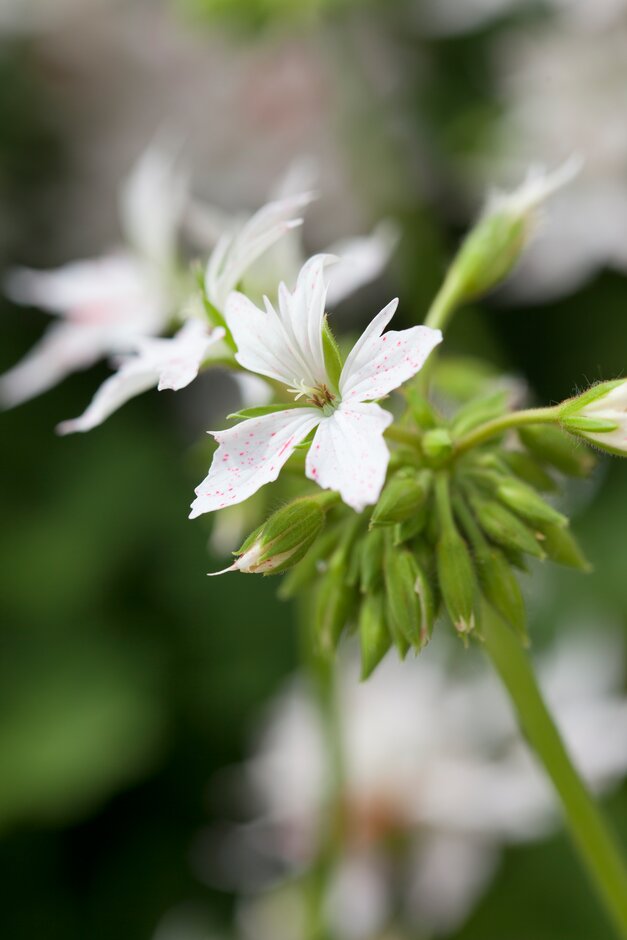Size
Ultimate height
0.1–0.5 metresTime to ultimate height
1–2 yearsUltimate spread
0.1–0.5 metresGrowing conditions
Moisture
Moist but well–drainedpH
Acid, NeutralColour & scent
| Stem | Flower | Foliage | Fruit | |
| Spring | Red White | Green | ||
|---|---|---|---|---|
| Summer | Red White | Green | ||
| Autumn | Green | |||
| Winter | Green |
Position
- Full sun
Aspect
South–facing or West–facing or East–facing
Exposure
Sheltered Hardiness
H1CBotanical details
- Family
- Geraniaceae
- Native to GB / Ireland
- No
- Foliage
- Evergreen
- Habit
- Bushy
- Genus
Pelargonium can be perennials, sub-shrubs or shrubs, sometimes succulent and mostly evergreen, with palmately lobed or pinnately divided leaves and clusters of slightly irregular, 5-petalled flowers
- Name status
Accepted
- Horticultural Group
- Zonal pelargoniums are bushy evergreen perennials with fleshy stems, rounded, palmately lobed leaves often zoned with maroon, and single or double flowers in shades of purple, red, pink, orange and white, from early to late summer
How to grow
Cultivation
Enjoys good light and frost-free conditions. A high potash feed encourages flowering in spring and summer. See Pelargonium cultivation
Propagation
Propagate by softwood cuttings in spring and summer
Suggested planting locations and garden types
- City and courtyard gardens
- Patio and container plants
- Mediterranean climate plants
- Flower borders and beds
Pruning
Cut back in spring if plants have become leggy. Deadhead regularly
Pests
Generally trouble-free, but may suffer from aphids in spring
Diseases
Generally disease-free, but may be susceptible to grey moulds, pelargonium rust and pelargonium viruses
Get involved
The Royal Horticultural Society is the UK’s leading gardening charity. We aim to enrich everyone’s life through plants, and make the UK a greener and more beautiful place.
